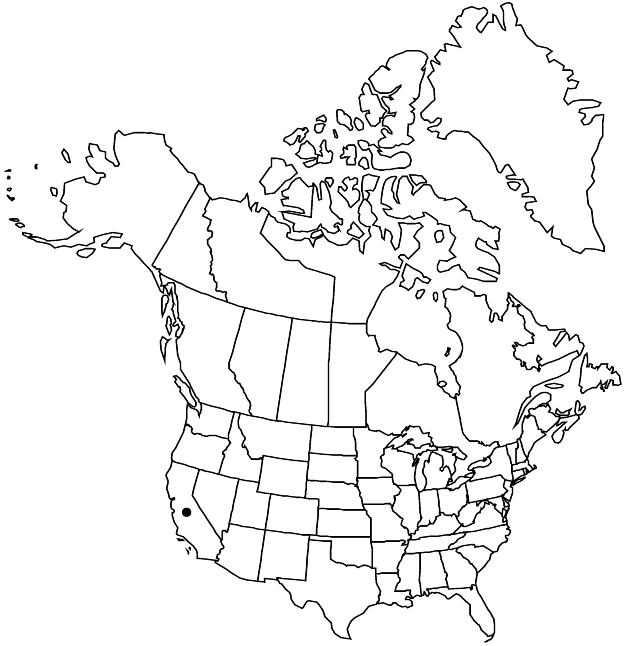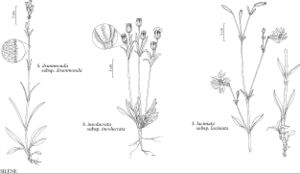Difference between revisions of "Silene laciniata subsp. laciniata"
FNA>Volume Importer |
FNA>Volume Importer |
(No difference)
| |
Revision as of 22:35, 16 December 2019
Stems ascending, decumbent at base, much-branched distally, glabrate proximally, glandular-pubescent distally. Leaves: proximal, blade oblanceolate to lanceolate, 1.5–10 cm × 2–10(–20) mm, with short, ± retrorse pubescence on both surfaces, sometimes glandular; distal sessile, blade linear to lanceolate, reduced into inflorescence, 3–10 cm × 2–10(–20) mm, apex acute. Inflorescences well developed, (3–)5–many-flowered, open, compound, long-branched cymes, bracteate; bracts resembling distal leaves, reduced. Calyces broadly tubular, 12–26 × 4–6 mm in flower, to 8 mm broad in fruit, less than 1/2 as broad as long, narrowed to base. Capsules oblong. 2n = 96.
Phenology: Flowering spring–summer.
Habitat: Chaparral, oak woodlands, sea slopes and cliffs
Elevation: 0-1200 mm
Distribution

Calif., Mexico.
Discussion
A very narrow-leaved form of subsp. laciniata from the cliffs of Santa Cruz Island off the coast of California has been named Silene simulans.
Selected References
None.
